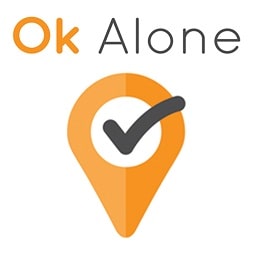One of the simplest forms of lone worker protection is uncovering hidden hazards in the workplace. When it comes to creating a risk assessment, you’ll find that some of the hazards are quite easy to identify. Everyone is aware of the threats of working at height, with electricity, with moving machinery, or with volatile chemicals. Not to mention the slips, trips, and falls can happen virtually anywhere.
These types of hazards are common and easy to add to a list. Thinking you’ve got everything covered can also lead to complacency about the less obvious lone worker protection hazards in the workplace. This is one of the biggest safety mistakes employers can make. These often-overlooked hazards are equally dangerous, if not more, due to their unexpected nature.
To truly keep your lone working employees safe, you’ll need to dig deeper. Here are some tips on how to uncover the hidden hazards in your workplace.
Check accident records
Accidents are often repeated, so it’s worth taking a look at past incidents to identify hazardous conditions and causes of past accidents. You might even notice patterns that will help you devise a better safety strategy.
Ask your employees
Talk to your employees about what they think the hazards are. They might notice things you don’t, or point out particular risks you weren’t aware of. For example, there are unique risks experienced by expectant mothers or those with disabilities. It’s also a good idea to talk to people who are only in the workplace occasionally, such as maintenance staff, contractors, and the general public. Their fresh first impressions can say a lot about the overall safety of your workplace.
Check chemical data sheets and manufacturer’s instructions
These explicitly explain the risks associated with using a product and may offer guidance on how to ensure everyone’s safety.
Think about the non-routine tasks
Don’t forget jobs don’t always go by the book. Sometimes workers need to carry out tasks that are unscheduled or unplanned, and yet need to be completed immediately. So when you’re thinking about the risks associated with a particular position, you also need to think about things like maintenance, repair, cleaning, or anything else that may fall outside of normal duties.
Contact trade associations
If your business is a member of a trade association, get in touch with them. They’ll be able to provide you with helpful advice, guidance, and insights into the kinds of lone worker protection safety issues similar businesses are facing.
Think long term
Don’t forget to think about the long-term hazards to health, such as back injuries, exposure to noise, or exposure to high levels of chemicals.
You don’t need to be a health and safety expert to create a comprehensive risk assessment that’s tailored to your lone workers. You do, however, need to understand that lone workers are more vulnerable than staff who work as part of a crew, and that they face special risks.
Get in the know about Lone Worker Protection
To better inform yourself of all aspects of lone worker protection, check out our other blog posts. Or review that latest Canadian lone worker protection legislation. The more you know, the stronger your safety plan will be.

The Ok Alone team writes informative articles about lone working. Through our articles, we aim to educate readers on the benefits and best practices of using our lone worker app, and how Ok Alone can help mitigate risks and enhance communication between workers and monitors. Learn about other areas including legislation, risk management, and legal compliance plus lone worker features such as man down, high-risk check ins and location monitoring.

